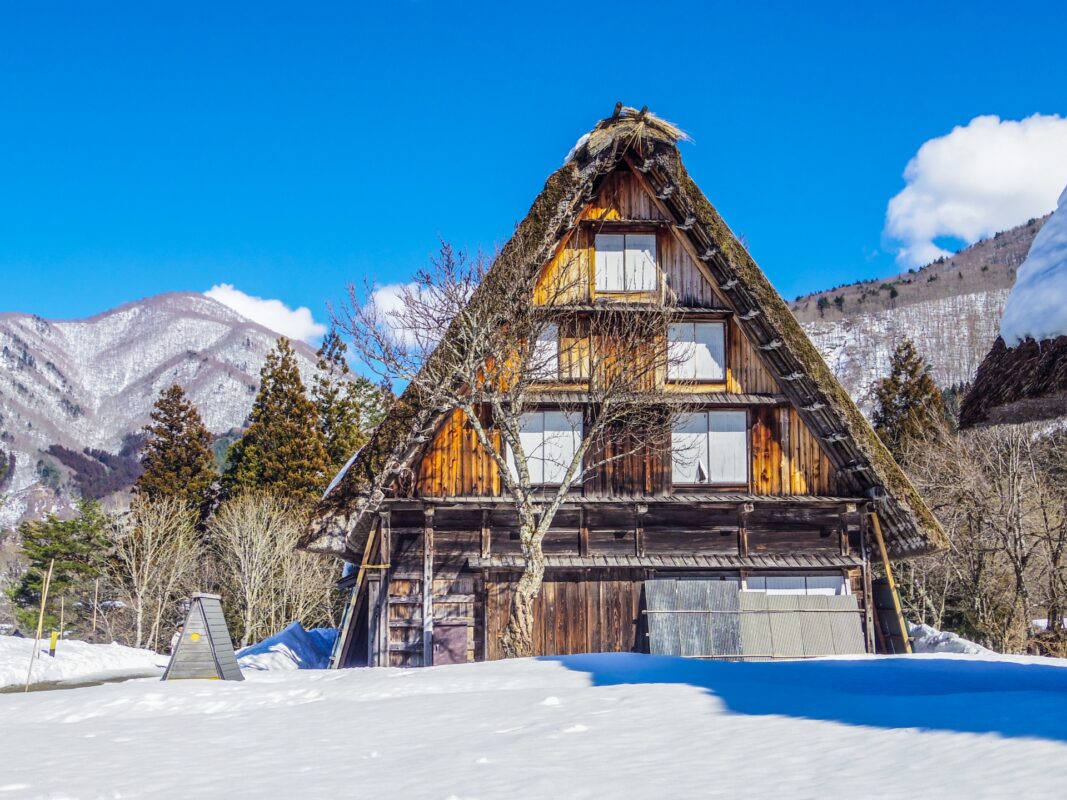Rediscover the Charm of Heavy Snow! A Journey Through Japanese Customs and History Unraveled from the Twenty-Four Solar Terms and Seventy-Two Pentads

『 This article is… 』
This page explains the unique customs and events specific to times of heavy snowfall in various regions of Japan through “Kasumi Points.” From Hokkaido’s Snow Festival to the way winter is spent in Okinawa, it introduces the charm of winter in each area. Aimed at those who want to deeply understand winter in Japan, including travel enthusiasts and those interested in culture, reading this page provides the benefit of gaining an understanding of Japan’s rich winter culture and the distinctive features of each region, offering inspiration for future travel plans.
Hello, I’m Kasumi, a web writer who travels all over Japan. With a feminine perspective and keen sensitivity, I’ve explored all 47 prefectures, learning about the beauty, charm, and deep culture of each place. This time, I want to delve into “Daixue” (Major Snow), one of the Twenty-Four Solar Terms, as a keyword to explore Japanese customs, history, origins, and what meaning it holds in the modern day, as well as how it is being passed down.
In Japan, where the changes of the four seasons are cherished, the Twenty-Four Solar Terms teach us ways to live in harmony with nature’s rhythm through their meanings and characteristics. “Daixue” in particular, signifies the true arrival of winter. Each region has its own customs and events against this backdrop, breathing life into the wisdom and culture of the Japanese people.
By integrating my travel experiences, let’s explore together the historical background of the Daixue period, what meanings are imbued within it, and what value it holds for us today. Touching upon the characteristics of each region and current customs, I will convey the rich culture and historical depth that Daixue brings, through my eyes.
Major Snow and the Deepening of Winter in the Twenty-Four Solar Terms
The Meaning of the Twenty-Four Solar Terms and Major Snow
The Twenty-Four Solar Terms, a calendar system originating from ancient China, divides the year into 24 periods, each representing different natural changes. One of these periods is “Major Snow,” which occurs approximately between December 7th and December 21st every year, signifying a time when heavy snowfalls are expected. This term was named for the period when winter deepens, and snow begins to fall more extensively across many regions.
Characteristics and Impacts of Major Snow
Japan, stretching from north to south, exhibits a diverse range of landscapes and impacts of Major Snow across different regions. In areas like Hokkaido and parts of Tohoku, snow accumulates deeply during this period, making it a prime time for winter leisure activities. Conversely, in regions south of Kanto, where snowfall is scarce, the period is more indicative of the intensification of winter cold.
Japanese Customs During Major Snow
With the arrival of Major Snow, various preparations and events to welcome winter take place throughout Japan. For instance, in certain areas of Hokkaido, preparations begin for the “Snow Festival,” an event that attracts many tourists, both domestic and international, as a winter spectacle. In homes, it becomes common to enjoy hot pot dishes during this period, a practice that warms the body and fosters family togetherness, reflecting a facet of Japanese culture.
From My Experiences
Traveling all over Japan, I have unforgettable memories of visiting Otaru in Hokkaido during Major Snow. The snow-covered canal and the atmospheric streets gave me the illusion of stepping into another world. There, I could see how locals enjoy the snow and retain deep-rooted winter customs, allowing me to experience the rich culture of Japan during Major Snow.
Furthermore, I have heard from friends living in warmer regions that during Major Snow, they cherish customs like eating pumpkins on the Winter Solstice and taking yuzu baths. Thus, Major Snow brings different customs and events across various regions, each reflecting the unique winter ambiance of the area.
The period of Major Snow unfolds a landscape woven with Japan’s natural and cultural essence. In the next section, we will delve deeper into the history and origins related to Major Snow, exploring why this period holds special significance for the Japanese people.
The History and Origins Embedded in Major Snow
Major Snow and Japanese Traditions
The concept of “Major Snow” in Japan, originally adopted from China’s Twenty-Four Solar Terms, has blended with Japan’s unique culture and customs to hold special significance. During Major Snow, agricultural activities decrease, and families spend more time indoors, leading to traditions and preparations from ancient times aimed at strengthening family bonds and preparing for winter.
The Origins and Historical Background of Major Snow
The term “Major Snow” directly refers to a period of significant snowfall, reflecting the agricultural society’s life rhythm and respect for the natural environment. In ancient Japan, this period marked the beginning of preparations for the next year’s farming activities and ceremonies to pray for a bountiful harvest. In regions with heavy snowfall, this time also signaled a shift to winter lifestyles, ensuring the storage of food and firewood to survive the winter, showcasing the wisdom developed to overcome the cold months.
Traditional Events During Major Snow
Various traditional events related to Major Snow take place across Japan. For example, “mochi-tsuki” (rice cake pounding) is a representative event of this period, performed to prepare for the New Year and to pray for the health and happiness of the family throughout the year. In community societies, neighbors gathering to participate in mochi-tsuki serves as an important opportunity to strengthen community bonds.
From My Experiences
During my visit to a mountain village in Gifu Prefecture, I witnessed unique events conducted during Major Snow. One such preparation was “fuyugakoi,” aimed at protecting homes and fields from snow damage. The cooperation among villagers and their use of traditional wisdom to prepare for winter let me feel the deep culture rooted in Japan’s seasonal lifestyles.
Additionally, this period includes the Winter Solstice, marking the shortest day of sunlight and symbolizing the return of hope as we move towards spring. Customs like eating pumpkins and bathing with yuzu during the Winter Solstice are still preserved in many households as a way to prepare both body and mind to overcome the cold of winter.
The period of Major Snow not only heralds the arrival of winter but also brings preparation and hope for the new year. In the next section, we will explore how the characteristics and customs of Major Snow are being passed down and acquiring new meanings in the modern era.
The Characteristics and Regional Customs of Major Snow
The Varied Landscapes of Major Snow Across Regions
Japan stretches from north to south, leading to a wide variation in the landscapes that Major Snow brings to different regions. In Hokkaido and the Tohoku region, snow blankets the scenery in white, creating beautiful winter vistas. Here, events and sports utilizing snow become a source of enjoyment during the winter months. Conversely, in the Kanto region, major snowfalls are rare, and when they do occur, they can disrupt daily life but also provide a special day for children to enjoy playing in the snow.
Regional Customs During Major Snow
Unique customs and events take place across Japan during the period of Major Snow. For example, in the Hokuriku region, preparations are made to combat the severe cold and snow, including “yuki-gakoi,” which protects homes from snow damage. In the Kyushu region, there is a custom of making “onbe,” a handmade heating device, to alleviate the cold of winter. These customs teach us the various ways regions prepare for and enjoy the onset of winter.
The Significance of Major Snow in Modern Times
Even today, the period of Major Snow continues to hold various meanings across Japan. Particularly, in areas where the pattern of snowfall has changed due to global warming, the traditional appearance of Major Snow is becoming less common. This change demands adaptations in snow-related events and customs. However, it also prompts people to become more environmentally conscious, preserving regional traditions while finding new ways to enjoy winter.
My Reflections
What I’ve felt during my travels is that the customs and events seen during Major Snow reflect the natural environment and culture of each region. People in areas with heavy snowfall live in harmony with the snow, finding innovative ways to enjoy it. Meanwhile, in regions with less snow, there’s a warm sense of community as people come together to withstand the cold of winter. These customs and events are evidence of how the Japanese have cherished the changing seasons and lived in coexistence with nature.
The period of Major Snow represents more than just a shift towards harsher cold; it’s a time when the rich culture and customs of various regions in Japan are vividly on display. In the next part, we will further explore how the period of Major Snow impacts modern life and culture, and how it integrates into our lives today.
The Role and Value of Major Snow in Contemporary Life
The Impact of Major Snow on Modern Living
Major Snow holds special meaning for many people today, especially in urban areas where snow is less common. The forecast of Major Snow can bring various impacts on daily life, including disruptions to transportation and the need for caution when going outside. However, this period also brings unique winter pleasures. For urban areas where snow is a rarity, the temporary change in scenery that Major Snow brings can offer fresh surprises and joy to the people.
Leisure and Events During Major Snow
Winter sports and leisure activities, such as skiing, snowboarding, and snowshoeing, rely heavily on Major Snow. Regions abundant in snow attract many tourists for these activities, playing a significant role in supporting the winter economy. These areas may regard the winter season as a crucial tourist season. Additionally, events like snow festivals and snow lanterns serve as cultural activities that highlight the charm of Major Snow, drawing in many people.
Environmental Awareness and Major Snow
The period of Major Snow also serves as an opportunity to raise awareness about environmental changes. The impact of climate change, evident in the changing patterns of snowfall, reminds us of the importance of environmental consideration and sustainable living. For example, the effects of melting snow on agriculture and sustainable management practices for ski resorts are significant issues surrounding Major Snow in contemporary society.
My Perspective
Throughout my travels, I’ve experienced the “quiet” and “activity” brought by the Major Snow period. The silent, slowly accumulating snow brings a sense of tranquility, while the enthusiasm of people enjoying the snow generates a warm energy that makes us forget the winter cold. Even today, Major Snow profoundly affects our lives and culture, reminding us of the seasonal changes. Moving forward, I hope to continue cherishing the natural blessings of Major Snow and the culture that enjoys it.
The period of Major Snow holds meanings beyond mere climate change. Through the customs, events, and heightened environmental awareness it brings, we learn the importance of harmony and coexistence with nature. In concluding this series, I’ll share a summary and my thoughts on the experiences and lessons drawn from the period of Major Snow.
Summary and Reflections
The Deep Charm of the Major Snow Period
Through this blog, I’ve delved into how the period of Major Snow affects Japan’s nature, culture, and the lives of its people. I’ve shared the silence and activity Major Snow brings, the unique regional customs and events, and its role and value in modern times, interweaving my travel experiences.
The Importance of Regional Culture and the Natural Environment
The Major Snow period has reaffirmed the importance of regional culture and respect for the natural environment. Customs and events related to Major Snow seen across Japan convey the unique ways regions interact with nature and the wisdom of living together. These are treasures of culture that we must continue to cherish.
The Value of Major Snow in the Modern Age
Furthermore, as the landscape and timing of Major Snow change due to climate change, its period serves as a catalyst for renewing environmental awareness and contemplating sustainable living. The tradition of living in harmony with nature in Japan provides many insights for modern society.
My Thoughts
The special charm and warmth of regions during the Major Snow period have left a profound imprint on my heart throughout my travels across Japan. The interactions with people I’ve met in each region and the natural beauty that Major Snow brings have been unforgettable experiences. I hope this blog has conveyed some of the multifaceted values and attractions of the Major Snow period.
The four seasons of Japan each possess unique beauty and culture, but the Major Snow period, in particular, brings out the harshness of winter along with the warmth of people and regional bonds. We must continue to value the rhythm of nature, preserving and sharing the meanings and values of each season.
This journey through the beautiful landscapes and deep culture revealed by the Major Snow period has been truly heart-stirring. I will continue traveling across Japan to share its allure.
Kasumi’s Points
1.Hokkaido: Sapporo Snow Festival
- Kasumi’s Point: The Sapporo Snow Festival, held every February in Sapporo City, Hokkaido, is an event where you can fully enjoy the charm of heavy snow. Snow sculptures and giant snow statues from around the world are displayed, enveloping the cold winter of Hokkaido in a warm atmosphere. When I visited, I was overwhelmed by the breathtaking beauty of the snow art. This festival significantly contributes to promoting regional culture utilizing heavy snow and boosting winter tourism.
2.Niigata Prefecture: The Snow Country of Echigo
- Kasumi’s Point: Known as one of Japan’s heavy snowfall areas, Niigata Prefecture is sometimes referred to as the “Snow Country” of Echigo. Especially in mountainous areas, the deep snow evokes the true scenes of a snow country. During my visit, I was impressed by how the locals live in harmony with the snow, adopting unique cultural and living techniques, such as traditional methods of protecting homes from snow damage, which are a testament to the region’s wisdom.
3.Gifu Prefecture: Shirakawa-go’s Gassho-style Houses
- Kasumi’s Point: Shirakawa-go in Gifu Prefecture, known for its heavy snowfall, is famous for its snowscapes and traditional Gassho-style houses. In winter, the area transforms into a quiet, fantastical snowscape, resembling a different world. Visiting there, I was captivated by the timeless beauty and tranquility emanated by the snow-covered Gassho-style houses. The community’s collaboration in overcoming harsh winters strengthens their communal bonds.
4.Nagano Prefecture: The Fire Festival of Nozawa Onsen Village
- Kasumi’s Point: In Nozawa Onsen Village, Nagano Prefecture, the “Nozawa Onsen Dosojin Fire Festival” takes place during the period of Major Snow. This traditional event is held to pray for the safety of the village, the health of families, and a good harvest. Participating in the festival, I could feel the strength of the community as villagers united to enjoy the festival around the blazing fire, surrounded by snow.
5.Okinawa Prefecture: Unique Warm Winter Customs
- Kasumi’s Point: In Okinawa Prefecture, where heavy snow is never experienced, unique customs and events characterize the winter period. For example, “Yuimaru,” which refers to cooperative work and community events, is an important culture that deepens community ties. During my winter visit to Okinawa, I participated in local festivals and events held in the warm climate, experiencing Okinawa’s unique way of spending winter and the warmth of its people.







